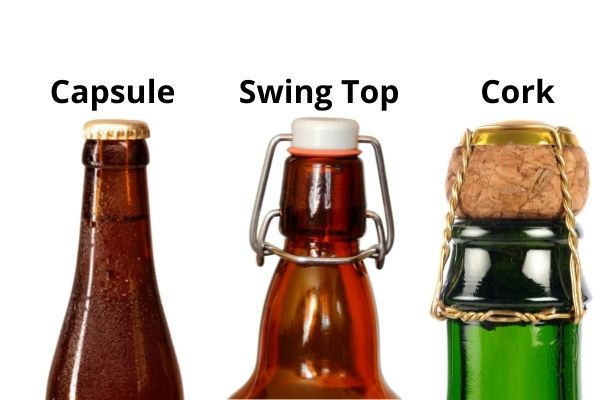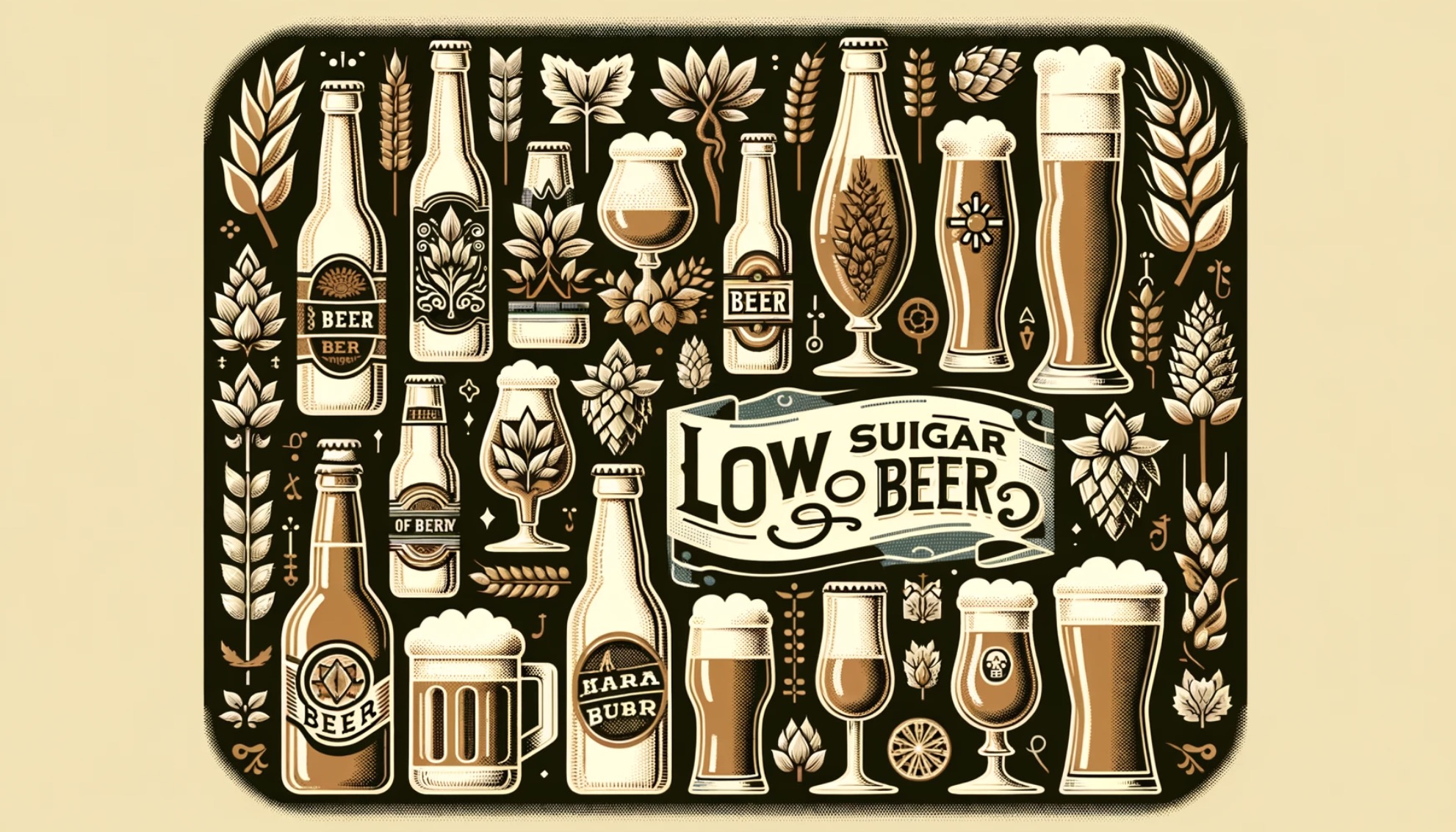Have you ever wondered why some beer bottles have twist-off caps while others have pry-off caps? From the convenience for consumers to the traditional methods of bottling beer, we will uncover the pros and cons of twist-off and pry-off caps.
The main reasons are:
1. Traditional brewing methods: Many breweries still use traditional brewing methods that require pry-off caps to seal the bottle. These methods have been used for centuries and are still preferred by some brewers.
2. Cost: Twist-off caps are more expensive to produce than pry-off caps. This extra cost may not be feasible for some breweries, especially smaller ones.
3. Shelf life: Twist-off caps may not provide as tight of a seal as pry-off caps, which can affect the shelf life of the beer. This is especially important for beers that need to age or be stored for longer periods of time.
In this article, we will explore the differences between the two types of caps and delve into the reasons why breweries choose one over the other.
What Are Twist-Off Caps and Pry-Off Caps?
Twist-off caps and pry-off caps are common types of closures used for sealing beer bottles, providing a crucial function in the packaging industry.
Twist-off caps, as the name suggests, simply twist off the bottle with ease, making them convenient for quick access to the brew inside. On the other hand, pry-off caps require a bottle opener to pry them off, adding a traditional touch to the beer opening experience.
Both closures play a vital role in maintaining the freshness and carbonation of the beer by securely sealing the bottles. The design of these caps is essential not just for functionality, but also for branding and marketing purposes, as they can contribute to the overall aesthetics of the packaging and influence consumer perception.
What Are the Differences Between Them?
The main differences between twist-off caps and pry-off caps lie in their design and mechanism of bottle opening, influencing factors such as accessibility and ease of use for consumers.
- Twist-off caps typically feature grooves around the circumference of the cap that allow users to twist them off with ease, making them a popular choice for drinks that are meant to be consumed quickly or on-the-go.
- On the other hand, pry-off caps are equipped with a lip that can be lifted using a bottle opener, providing a more traditional and nostalgic experience for those who enjoy the ritual of using such tools.
These design variations cater to different consumer preferences based on the desired bottle opening method and overall user experience.
Why Do Some Beer Bottles Have Twist-Off Caps?
Some beer bottles are equipped with twist-off caps to enhance convenience for consumers, align with modern preferences, and streamline the manufacturing process.
These twist-off caps provide a hassle-free way for consumers to open their beer bottles, especially in social settings or outdoor events, where traditional bottle openers may not be readily available. The shift towards twist-off caps reflects the evolving consumer preference towards products that are easy to use and require minimal effort to access.
From a manufacturing standpoint, twist-off caps offer a more efficient process compared to traditional cork or pry-off caps, reducing production time and costs for breweries.
Convenience for Consumers
Twist-off caps offer consumers a hassle-free experience when opening beer bottles, eliminating the need for additional tools and enhancing overall convenience in beverage consumption.
The ease of use provided by twist-off caps simplifies the process of enjoying a cold beverage, making it especially convenient for social gatherings and picnics.
From a packaging design perspective, twist-off caps contribute to a sleek and modern look, aligning with the trend of minimalist and user-friendly packaging designs.
This improved consumer experience not only saves time but also enhances satisfaction levels, leading to a positive brand interaction that resonates with customers.
Cost-Effective for Breweries
From a brewery perspective, twist-off caps contribute to production efficiency and cost savings, making them a cost-effective choice for bottling operations.
The ease of application and removal of twist-off caps streamlines the bottling process, allowing breweries to increase their production output with reduced manual labor. This not only saves time but also minimizes the risk of human error, ensuring consistent quality control.
The compatibility of twist-off caps with automated bottling lines further boosts operational efficiency, enabling faster packaging speeds and enhancing overall productivity. As breweries strive to optimize their processes and minimize expenses, the adoption of twist-off caps aligns perfectly with cost considerations in the packaging process, offering a competitive edge in the industry.
Better for Certain Styles of Beer
In beer packaging, twist-off caps are preferred for certain beer styles that require optimal preservation of freshness and carbonation, ensuring a quality seal for longer shelf life.
Twist-off caps help to create an airtight seal on the bottle, preventing oxygen from entering and impacting the beer’s flavor profile. This sealing mechanism also plays a crucial role in maintaining the carbonation level of the beer, ensuring that it retains its effervescence until the moment it is opened.
By securely sealing the bottle with a twist-off cap, brewers can guarantee that their carefully crafted brews reach consumers in the same pristine condition as when they were first packaged, delivering a consistently high-quality drinking experience.
Why Do Some Beer Bottles Have Pry-Off Caps?
The use of pry-off caps on beer bottles reflects a traditional method of bottling that requires specialized equipment and upholds a classic approach to sealing beverages.
This traditional bottling process involves carefully sealing the bottles with pry-off caps, which are specifically designed to secure the contents inside without compromising quality. The bottling equipment used for this method is crucial in ensuring a tight seal and preventing any unwanted air or contaminants from affecting the beer.
.jpg)
Maintaining a classic seal with pry-off caps not only preserves the integrity of the product but also harks back to a time-honored way of packaging beverages, adding a sense of authenticity and craftsmanship to the final product.
Traditional Method for Bottling Beer
While there are many ways of sealing a bottle of beer, few have made it out as broadly as the crown cap or capsule.

Pry-off caps represent a traditional approach to bottling beer that emphasizes craftsmanship, adherence to industry standards, and the preservation of time-honored techniques in the brewing process.
Crafting beer bottles with pry-off caps requires a meticulous attention to detail that ensures a secure seal. This process involves precision in the application of the caps to maintain the freshness and quality of the beer within.
Brewmasters are known for their dedication to perfection, often inspecting each capped bottle to guarantee that the final product meets the highest standards. The sound of the cap being firmly pressed in place is a testament to the artistry and expertise that goes into every aspect of beer production.
Better for Certain Styles of Beer
For craft beer and specialty brews, pry-off caps offer a reliable seal that ensures stringent quality control measures and aligns with the artisanal nature of craft brewing.
Craft brewers appreciate the secure seal that pry-off caps provide, which plays a crucial role in maintaining the freshness and flavor of their carefully crafted beers. The tamper-evident feature of these caps also helps in verifying the authenticity of the product, instilling confidence in consumers.
The tradition of using pry-off caps in craft beer packaging dates back to the early days of the industry, symbolizing craftsmanship and dedication to quality. This connection to tradition reflects the values that craft beer producers strive to uphold in every aspect of their operations.
What Are the Pros and Cons of Twist-Off Caps?
Twist-off caps offer enhanced accessibility and ease of use for consumers, influencing their behavior towards choosing products with convenient packaging solutions.
The convenience of twist-off caps allows users to easily open and close containers without the need for additional tools, making them ideal for individuals with limited hand strength or mobility issues. This accessibility feature not only caters to a wider consumer base but also promotes inclusivity in product design.
Some consumers may find twist-off caps less secure than traditional packaging methods, potentially leading to concerns about product freshness or tampering. Despite this drawback, the market demand for user-friendly packaging continues to grow as brands prioritize consumer convenience and satisfaction.
What Are the Pros and Cons of Pry-Off Caps?
Pry-off caps excel in maintaining the shelf life of beverages but face competition from twist-off caps due to evolving consumer preferences and market trends.
One of the strengths of pry-off caps lies in their robust sealing mechanism, which effectively preserves the freshness and quality of the beverages. This feature makes them particularly suitable for products that benefit from extended shelf life, such as craft beers and specialty sodas.
The emergence of twist-off caps has introduced a new dynamic in the market, appealing to consumers who prioritize convenience and ease of use. As a result, beverage producers are increasingly weighing the trade-offs between the superior preservation offered by pry-off caps and the convenience factor of twist-off caps to align with changing consumer demands.
Why Don’t All Beer Bottles Have Twist-Off Caps?
The diversity in beer packaging stems from a blend of industry tradition, supply chain dynamics, and the unique requirements of different beer styles.
Traditional beer packaging methods have deep roots in the history and culture of brewing, with certain closures like cork and cage reflecting artisanal craft traditions. On the other hand, modern advancements in supply chain management have led to the widespread adoption of twist-off caps for convenience and efficiency.
The choice of beer style plays a crucial role in determining the best packaging approach; for example, stouts and heavier ales may benefit from bottle conditioning with crown caps to enhance flavor and carbonation retention.
Preference for Tradition
Some breweries maintain traditional bottle closures to reinforce their branding identity and foster brand loyalty among consumers who value heritage and authenticity.
By adhering to these traditional bottle closures, breweries create a strong visual link to their brand heritage, evoking a sense of nostalgia and trust in consumers. Branding strategies play a crucial role in conveying a message of quality and history, resonating with customers who seek authenticity in their beer choices.
The tactile experience of opening a bottle sealed with a traditional closure can deepen the emotional connection between the consumer and the brand, further solidifying loyalty. Through consistent branding efforts, breweries can cultivate a loyal customer base that appreciates the timeless appeal of these closures.
Limitations for Certain Beer Styles
The choice of bottle closure is influenced by factors such as maintaining carbonation levels, the efficiency of distribution logistics, and the compatibility with different beer styles.
- For carbonated beverages like beer, the preservation of desired carbonation levels is crucial in ensuring a quality drinking experience for consumers. Bottle closures play a significant role in retaining the carbonation within the container by forming an airtight seal.
- When it comes to distribution logistics, the type of closure selected must align with the transportation and storage requirements to prevent leakage or damage during transit. Consideration of different beer styles, whether it’s a traditional ale or a trendy IPA, influences the choice of closure design to complement the beverage’s unique characteristics and aroma profile.
Cost Considerations
Cost factors play a significant role in determining the type of bottle closure used, influencing production efficiency, distribution costs, and overall cost considerations in the beer packaging process.
Considering the impact of cost considerations, companies often opt for bottle closures that not only enhance production efficiency but also minimize distribution costs. By choosing cost-effective packaging solutions, breweries can streamline their operations, reduce expenses, and maintain competitiveness in the market.
The choice of bottle closure directly affects the bottom line, making it essential for manufacturers to balance quality, durability, and affordability. This strategic approach ensures that the packaging process remains efficient and cost-effective, meeting both consumer demands and business objectives.
Can Pry-Off Caps Be Converted to Twist-Off Caps?
The conversion of pry-off caps to twist-off caps presents challenges in metal cap recycling and waste management processes, necessitating sustainable solutions for the industry.
One major complexity in this transition is the impact on recycling systems and waste streams. Pry-off caps, typically made of steel or aluminum, are not always easily recyclable due to their mixed material composition. This can lead to inefficiencies in recycling facilities and increased waste generation.
By switching to twist-off caps, which are often made of a single material such as aluminum, the recycling process becomes more streamlined and sustainable. Implementing these sustainable practices is crucial for reducing environmental impacts and promoting a circular economy in the beverage packaging sector.
Challenges and Limitations
The transition of metal pry-off caps to twist-off designs poses challenges in innovation and material compatibility, requiring innovative solutions to address industry needs.
One significant obstacle in converting metal pry-off caps to twist-off variants is maintaining the structural integrity of the cap while ensuring ease of opening for consumers. Traditional pry-off caps have a specific design that may not directly translate to a twist-off mechanism, creating a need for creative engineering solutions.
The choice of materials plays a crucial role in this transition, as the new twist-off caps must maintain the same level of durability and seal integrity as their pry-off counterparts. This necessitates advancements in material technology to find suitable alternatives that are compatible with twist-off functionalities.
Potential Solutions
Proposed solutions for converting metal pry-off caps to twist-off alternatives focus on enhancing sustainability practices, aligning with market trends towards eco-friendly packaging solutions.
- These strategies involve utilizing recyclable materials and implementing innovative manufacturing processes to reduce waste and energy consumption.
- Consumer preferences for sustainable packaging have been driving this shift, prompting companies to adopt eco-conscious practices to meet market demands.
In the packaging industry, environmental considerations play a crucial role in influencing product design and development.
By transitioning to twist-off options, brands can improve their sustainability profile and appeal to a growing segment of environmentally conscious consumers, ultimately benefiting both the planet and their bottom line.
Frequently Asked Questions
Why do all beer bottles not have twist-off caps instead of pry-off caps?
There are a few reasons why not all beer bottles have twist-off caps:
1. Traditional brewing methods: Many breweries still use traditional brewing methods that require pry-off caps to seal the bottle. These methods have been used for centuries and are still preferred by some brewers.
2. Cost: Twist-off caps are more expensive to produce than pry-off caps. This extra cost may not be feasible for some breweries, especially smaller ones.
3. Shelf life: Twist-off caps may not provide as tight of a seal as pry-off caps, which can affect the shelf life of the beer. This is especially important for beers that need to age or be stored for longer periods of time.
Do all twist-off caps fit on all beer bottles?
No, not all twist-off caps are the same size and shape. Different breweries may use different types of twist-off caps, and some may not fit on certain bottles. This is why pry-off caps are more universal and easier to use on different bottles.
Can I use a bottle opener on twist-off caps?
Yes, you can still use a bottle opener on twist-off caps if you prefer. It may take a bit more effort, but it is still possible to open a twist-off bottle with a bottle opener.
Are twist-off caps more convenient than pry-off caps?
It depends on personal preference. Some people may find twist-off caps easier to open, while others may prefer the traditional method of using a bottle opener on pry-off caps. It ultimately comes down to the individual’s preference.
Can you reseal a twist-off bottle?
No, once a twist-off bottle is opened, it cannot be resealed. This is because the cap is designed to be twisted off and cannot be put back on tightly like a pry-off cap can be.
Do twist-off caps affect the taste of the beer?
There is no significant difference in taste between beers with twist-off caps and pry-off caps. However, some people may argue that pry-off caps create a tighter seal, which can help preserve the beer’s flavor and carbonation better.





Leave a Reply
You must be logged in to post a comment.